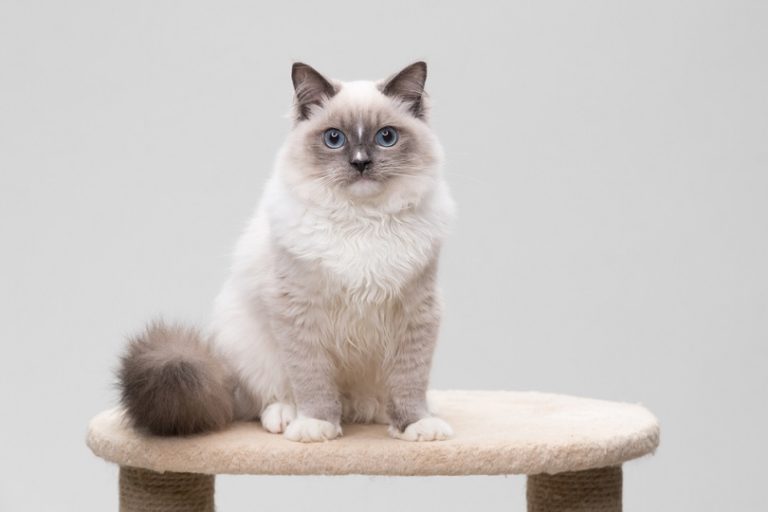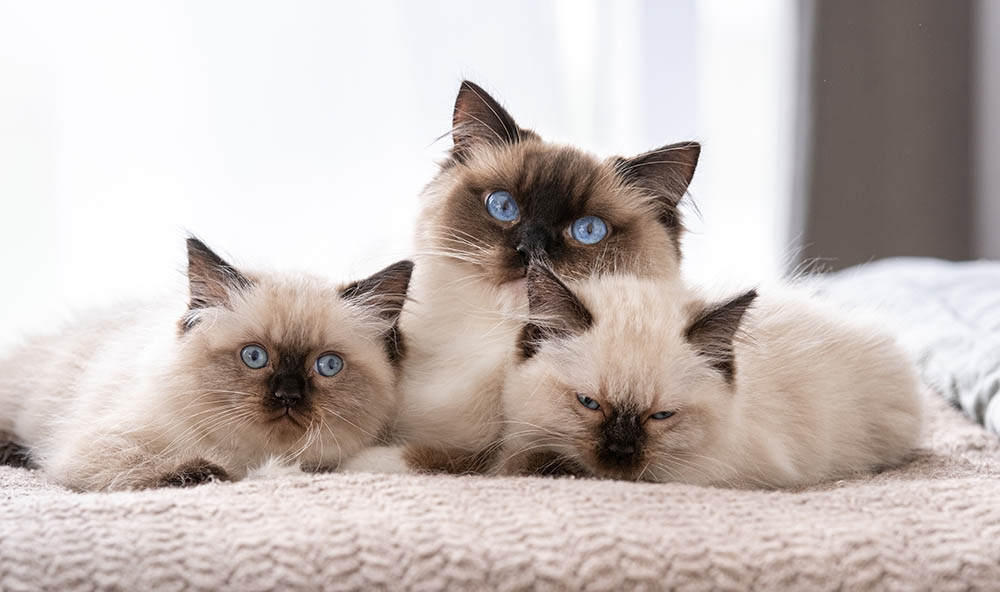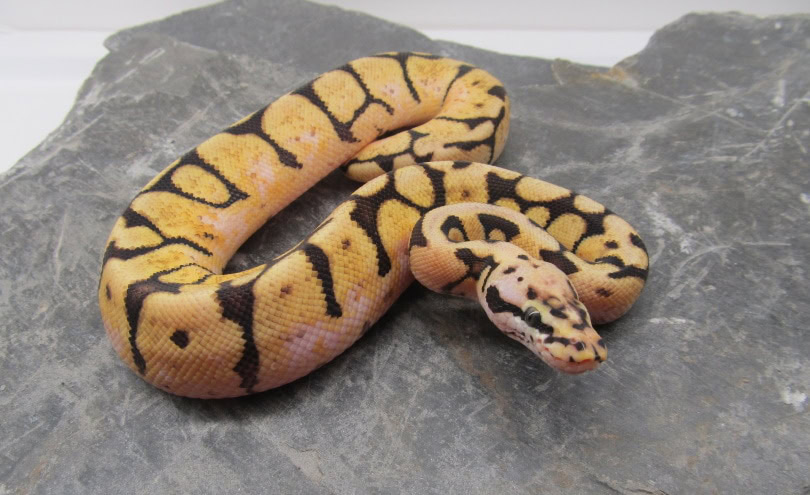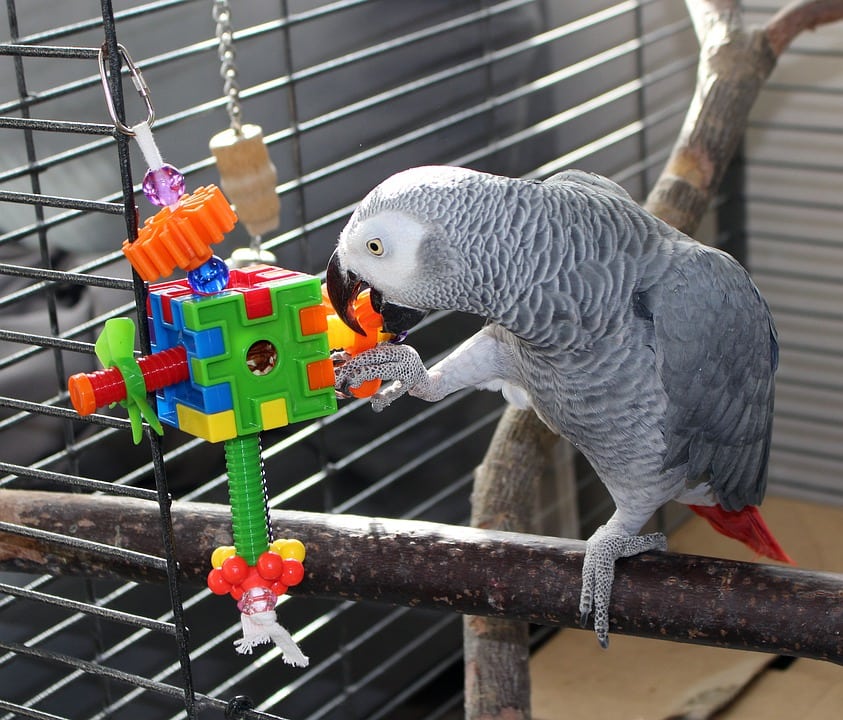VET APPROVED

The information is current and up-to-date in accordance with the latest veterinarian research.
Learn more »Click to Skip Ahead
Ragdoll cats are known for their docile and affectionate nature and for their pointed coat color pattern (darker face, legs, tail, and ears), which can be seal, blue, chocolate, lilac, red, cream, cinnamon, or fawn-colored. They are also known for their deep blue eyes. Blue is the only color of eyes that a Ragdoll cat can have to be classified as a purebred Ragdoll by The International Cat Association (TICA).

Are Blue Eyes Common in Ragdoll Cats?
Not only are blue eyes common in Ragdoll cats, but a Ragdoll can’t be classified as a purebred cat without them. The blue eyes can range in intensity of color, from pale blue to dark navy. Most breeders prefer intense, deep colors to pale ones.
Can Ragdoll Cats Have Other Eye Colors?
Mink, sepia, and solid color Ragdoll cats do not have blue eyes. These types are considered controversial and are not currently recognized by The International Cat Association. However, they may eventually form a separate breed called Cherubim, with its own breed standards.
Mink Cherubim cats can have blue-green eyes in varying shades or aqua (green-blue) eyes. Sepia Cherubim cats display the widest variety of eye colors. While all kittens are born with blue eyes, these can later change to green, gold, bronze, copper, yellow, or hazel.

Eye-Color Changes in Ragdoll Kittens
All Ragdoll kittens are born with blue-gray eyes. Their eyes start to change to their permanent, adult eye color by the time they reach 7 weeks of age. Any color changes after 2 months may be caused by eye disease and warrant a visit to the vet.
Heterochromia
Heterochromia refers to a situation where a cat has eyes of two different colors or one eye has two different colors. When this occurs, there are different amounts of pigment (melanin) in each iris, or in areas of the same eye. It’s not an indication of a health issue and it has been present since birth. If your Ragdoll cat’s eyes change color during adulthood, it is considered abnormal and an urgent vet visit is necessary.

Other Unique Features of Ragdoll Cats
Ragdoll cats are a unique and popular breed of cat known for their blue eyes and affectionate nature. They are named for their tendency to go limp when picked up, like a ragdoll. Ragdolls are a relatively new breed, having only been around since the 1960s.
Ragdoll cats are known for being gentle, loving, and laidback. They are often described as dog-like in their behavior, and they love to be with their humans. They are also known for being intelligent and easily trained.
While they are often thought of as white haired, Ragdolls can come in a wide range of colors and patterns that include blue, chocolate, seal, lilac, cream, and red.
If you’re looking for a loving, laidback companion that will follow you around and always be by your side, you can’t go wrong with a Ragdoll cat!


Final Thoughts
The breed standards established by international associations such as The International Cat Association (TICA), the Cat Fanciers’ Association (CFA), and the World Cat Federation (WCF) only permit Ragdolls to have blue eyes. All Ragdoll kittens are born with blue eyes, with their permanent color being exhibited around 2 months of age.
See also:
- Ragdoll Cat Health Problems: 6 Common Concerns
- Can Dogs Tell How Long You Are Gone? Factors, Tips, & FAQ
Featured Image Credit: Tatyana Vyc, Shutterstock












2 Responses
This is a great breakdown of Ragdoll eye color genetics and breed standards! One interesting point that often confuses people is that all Ragdolls are born with blue eyes, but only traditional colorpoint Ragdolls will retain them into adulthood. Mink, sepia, and solid Ragdolls—which some breeders recognize but associations like TICA don’t—can develop aqua, green, or even gold eyes as they mature.
A key reason purebred Ragdolls always have blue eyes is their temperature-sensitive albinism, controlled by the CS gene. This same gene influences their coat color, which is why their points darken in cooler areas of the body. Many people assume blue eyes in cats are linked to deafness, but unlike white cats with the dominant W gene, Ragdolls don’t carry that risk.
I also found the mention of heterochromia interesting! Since it’s tied to the white spotting gene, it wouldn’t typically occur in true Ragdolls unless there was an unexpected genetic variation. Have you ever come across a Ragdoll with odd-colored eyes, or would that suggest mixed ancestry?
It’s fascinating how blue eyes are not just common but essential for purebred Ragdolls according to TICA’s standards. The genetic link between their eye color and the colorpoint pattern is such a unique trait, and it makes me wonder—if the proposed Cherubim breed gains official recognition, how might that impact the perception of traditional Ragdolls?
Another point that stood out to me is how all Ragdoll kittens are born with blue-gray eyes, with their final color setting in by two months. That raises an interesting question—do breeders ever misidentify a kitten’s future eye color early on, especially in Mink or Sepia Ragdolls? It would be intriguing to hear from breeders who’ve observed unexpected changes.
Also, the clarification about heterochromia being harmless is really helpful. Many people assume it’s a defect when, in reality, it’s just another stunning genetic variation. Given how much misinformation exists about Ragdolls and blue eyes (like the myth that they are prone to deafness, which actually applies more to white-coated cats), accurate discussions like this are so valuable.